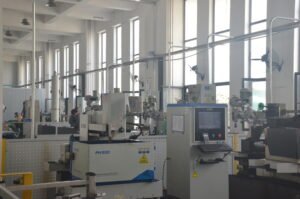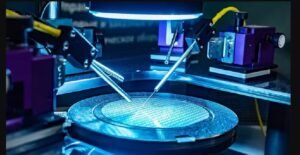Learn Everything About Welding at Anchorcut
Questions About Welding
Q: What is carbon arc air gouging?
A: Carbon arc air gouging is a surface processing method that uses a carbon rod as an electrode to generate an arc between the electrode and the workpiece. Compressed air (pressure 0.5-0.7 MPa) is used to blow away the molten metal. It is commonly used for weld root cleaning, groove cutting, defect repair, etc.
Q: Why is CO2 welding more efficient than manual electrode arc welding?
A:
- CO2 welding has a melting speed and melting coefficient 1-3 times higher than manual electrode arc welding.
- The groove section of CO2 welding is 50% smaller than that of manual electrode welding, and the deposited metal volume is reduced by half.
- The auxiliary time is 50% of manual electrode arc welding.
Combining these factors, the efficiency of CO2 welding compared to manual electrode arc welding is increased by a factor of 2.02-3.88.
Q: Why does the weld joint quality of CO2 welding surpass that of manual electrode arc welding?
A: CO2 welding has a smaller heat-affected zone, resulting in less welding deformation. Additionally, CO2 welds have low hydrogen content (≤1.6ML/100g), which leads to fewer pores and cracks. CO2 welds have good formation, fewer surface and internal defects, and a higher passing rate in radiographic testing compared to manual electrode arc welding.
Q: Why does CO2 welding have lower overall costs than manual electrode arc welding?
A:
- The reduced groove section decreases filler metal consumption by 36-54%.
- Electricity consumption is reduced by 65.4%.
- Equipment operation costs are lowered by 67-80% compared to manual electrode arc welding, resulting in a cost reduction of 20-40%.
- Reduced labor and time costs lower expenses by 10-16%.
- Savings in auxiliary labor, consumables, and corrective deformation costs.
Taking into account these five factors, CO2 welding can reduce overall welding costs by 39.6-78.7%, with an average reduction of 59%.
Q: What is low-frequency pulse welding? What applications is it suitable for?
A: Pulse arc welding with a pulse frequency of 0.5-30Hz is called low-frequency pulse welding. It is mainly used for TIG welding of stainless steel, steel, titanium, and other non-ferrous metals.
Q: What is medium-frequency pulse welding? What applications is it suitable for?
A: Pulse arc welding with a pulse frequency of 30-500Hz is called medium-frequency pulse welding. Due to the arc compression effect and good arc concentration, it is mainly used for TIG welding of thin-section stainless steel, steel, titanium, and MIG welding of stainless steel, aluminum, and aluminum alloys.
Q: Why does CO2 welding produce spatter?
A: Spatter is produced when the molten droplets at the end of the welding wire come into contact with the molten pool during short-circuit transition. The intense overheating and magnetic shrinkage cause the molten droplets to burst, resulting in spatter. The output inductance and waveform control of CO2 welding machines can minimize spatter.




